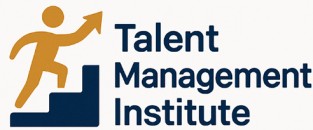
Defining Passive Leadership
Understanding the Concept of Passive Leadership
Defining passive leadership within the context of talent management requires a nuanced understanding of the term itself. In organizational psychology, passive leadership often refers to a hands-off approach where leaders refrain from making decisions, giving feedback, or taking necessary actions. This style is sometimes interchangeably called laissez-faire leadership, which means 'let them do' in French. However, this approach can lead to several psychological and work-related consequences for employees. Key influences in a workplace shaped by passive leadership include increased role stressors, such as role ambiguity and role conflict. Employees in such environments often experience a lack of clarity about their job responsibilities, leading to psychological stressors that can affect their overall job satisfaction and health. Moreover, passive leaders typically avoid confronting issues within their teams, opting instead to let problems resolve themselves or ignoring them altogether. This avoidant leadership style can exacerbate existing conflicts and foster a negative relationship between team members. The effects of passive leadership can be as detrimental as those of an overload of tasks, with employees feeling unsupported and undervalued. Studies have shown that this leadership style directly correlates with a decline in employee engagement and productivity. As suggested in the engagement coordinator's role, understanding the dynamics of employee relationships and actively participating in team-building activities is crucial for fostering a healthy work environment. While the role of leadership varies across different organizational structures, the hypothesis that a passive leadership attitude can severely impact both team efficiency and individual well-being is consistent across multiple occupational studies. Incorporating these insights into talent management practices can help mitigate the effects of passive leadership and cultivate a more engaging and productive workplace.The Role of Passive Leadership in Talent Management
The Influence of Passive Leadership on Talent Management Dynamics
In the realm of talent management, the approach a leader adopts plays a crucial role. A passive leadership style often involves a hands-off approach, characterized by a leader's reluctance to engage with team members unless a problem becomes significant. This leadership style can greatly affect the framework of talent management, with both positive and negative aspects to consider.
Passive leadership, or laissez-faire leadership, tends to create an environment where employees must navigate role stressors, such as role ambiguity and conflict. Without clear guidance, team members may face a struggle in defining their roles, which can lead to increased psychological stressors and impact their employee well-being.
This leadership style might inadvertently cause an overload of decision-making responsibilities on employees, affecting their psychological health. When leaders are avoidant and disengaged, the bond between leadership and employees weakens, potentially resulting in a negative relationship. Furthermore, according to applied psychology findings in the journal occupational psychology, passive leadership can impact employee performance, well-being, and overall job satisfaction.
By examining the meta-analysis of passive leadership and its effects, we understand the intricate relationship between leadership style and employee outcomes. For instance, while transformational leadership actively seeks to motivate and engage employees, a passive leader’s indifferent attitude can demotivate team members, affecting the organization's talent growth and retention strategies.
These impacts highlight the importance of addressing leadership role stressors with corrective measures. Leveraging this understanding can foster a more positive workplace environment.
To delve deeper into crafting effective strategies around such dynamics, explore the key success factors for HR enablers in talent management.
Challenges of Passive Leadership
Unraveling the Complex Web of Passive Leadership's Challenges
Passive leadership, or laissez-faire leadership, can present a myriad of challenges within the realm of talent management. The effects of this leadership style can trickle down and influence the psychological health and productivity of employees. Recognizing these challenges is crucial for understanding how passive leaders impact their teams and the dynamics within an organization. At its core, passive leadership is often marked by a hands-off approach where leaders avoid making decisions or taking a proactive stance in guiding their team members. This can lead to role ambiguity, where employees are unclear about their responsibilities, resulting in confusion. Such ambiguity often translates to role stressors, including role conflict, which can strain the relationship between employees and their managers. The negative relationship between passive leadership and employee engagement is well-documented in various studies. For instance, when leaders exhibit avoidant leadership behaviors, team members might feel unsupported and disengaged. This disengagement can further escalate stressors, leading to a decline in job satisfaction and overall employee well-being. Additionally, the psychological effects of passive leadership extend to feelings of overload and burnout. Leaders who fail to provide clear direction or feedback leave team members to navigate challenges on their own, which might increase workloads and create undue stress. Over time, this stress can lead to decreased productivity and an overall diminished work environment. The role of applied psychology in understanding these challenges cannot be understated. By analyzing the behavior patterns and attitudes exhibited by passive leaders, organizations can better grasp the underlying issues and work towards implementing transformational leadership models. This proactive shift in leadership style can help mitigate the challenges associated with laissez-faire leadership, paving the way for a more engaged and productive workforce. To delve deeper into how organizations can remedy challenges of passive leadership in talent management, and to explore actionable solutions, consider checking out this effective marketing RFP guide for optimal talent management strategies.Impact on Employee Engagement
Consequences on Workforce Commitment
Passive leadership can significantly affect employee engagement, which is pivotal for a thriving workplace. When leaders adopt a laissez-faire approach, team members often face role ambiguity and lack clarity in their responsibilities. This leadership style may lead to role conflict and even role stressors, creating a psychological burden on employees. Passive leaders might inadvertently cultivate an environment where employees feel ignored or undervalued. An avoidant leadership style can result in diminished motivation, leaving team members disengaged. According to applied psychology studies, such negative relationship dynamics may hinder employees' well-being and health, affecting their productivity and overall morale. Furthermore, when leaders fail to address issues or provide adequate guidance, employees may experience an overload of unmanageable tasks. This leads to a feeling of being overwhelmed, decreasing job satisfaction and potentially increasing turnover rates. Leadership theories and meta-analyses suggest that transformational leadership can counteract these adverse effects. Implementing active engagement strategies rather than passive attitudes can enhance employee commitment and foster a culture of psychological safety. By prioritizing effective communication and acknowledging employee contributions, organizations can mitigate the potential pitfalls of passive leadership. This approach not only boosts engagement but also strengthens the overall relationship between leaders and their teams.Strategies to Mitigate Passive Leadership
Counteracting the Challenges of Passive Leadership
Addressing passive leadership requires a multipronged approach to ensure that employee well-being and engagement are not compromised. An effective strategy acknowledges the presence of passive leadership tendencies and actively counters its influence within the team environment. One of the first steps in mitigating passive leadership is implementing transformational leadership practices. Transformational leaders actively engage with team members, providing clear guidance and fostering open communication to reduce role ambiguity and role conflict. By offering supportive feedback, these leaders enhance the psychological health of employees and dissolve the stressors psychology associates with avoidant leadership. Additionally, creating structured leadership training programs is essential. These programs focus on developing effective communication skills and proactive management techniques. Leaders learn to identify and address role stressors proactively, reducing the risk of overload and its negative relationship with employee productivity. Encouraging a collaborative work culture also plays a significant role. Leaders should facilitate team-building activities and promote open channels for feedback, allowing team members to share their concerns without fear of reprimand. This reduces the psychological distance between passive leaders and employees, fostering a more inclusive atmosphere. Furthermore, regular assessment and feedback mechanisms are crucial. By regularly evaluating leadership styles and employee attitudes, organizations can use data-driven insights to modify their approach. Using applied psychology techniques, leaders can better understand the variables affecting team dynamics and adjust their methods accordingly. Incorporating these strategies not only mitigates passive leadership's effects but also enhances overall team dynamics, setting a foundation for sustained employee success and well-being.Case Studies and Real-World Examples
Illustrating Real-World Scenarios
In examining the landscape of passive leadership, various case studies and real-world examples illustrate its pervasive nature and the subsequent implications on talent management. These scenarios offer concrete insights into how passive leadership manifests within organizational structures and affect team dynamics. One instance involves a tech company where a laissez-faire style was prevalent among its management. Leaders in this setting often avoided making critical decisions, leading to role ambiguity and stressors psychological among employees. The passive approach created an environment where employee well-being suffered as work overload became a significant issue. As a result, team members experienced role conflict, as they were unsure of their responsibilities and expectations.Moreover, a meta-analysis of organizations within the journal occupational realm highlights the negative relationship between passive and avoidant leadership styles and employee engagement. Teams under such leadership frequently reported lower morale and decreased productivity. The psychological effects of passive leadership were evident as employees showed diminished motivation and dissatisfaction with leadership roles. However, not all outcomes were entirely detrimental; in certain contexts, passive leadership allowed for exceptional autonomy and innovation among employees who thrived in the absence of micromanagement. Yet, these instances were exceptions rather than the rule, as most findings supported the idea that passive leadership often leads to adverse outcomes for both individuals and the organization as a whole. Understanding the nuances through these examples underscores the importance of proactive and transformational leadership approaches, which can help clarify roles, alleviate stressors, and foster a thriving work environment.













